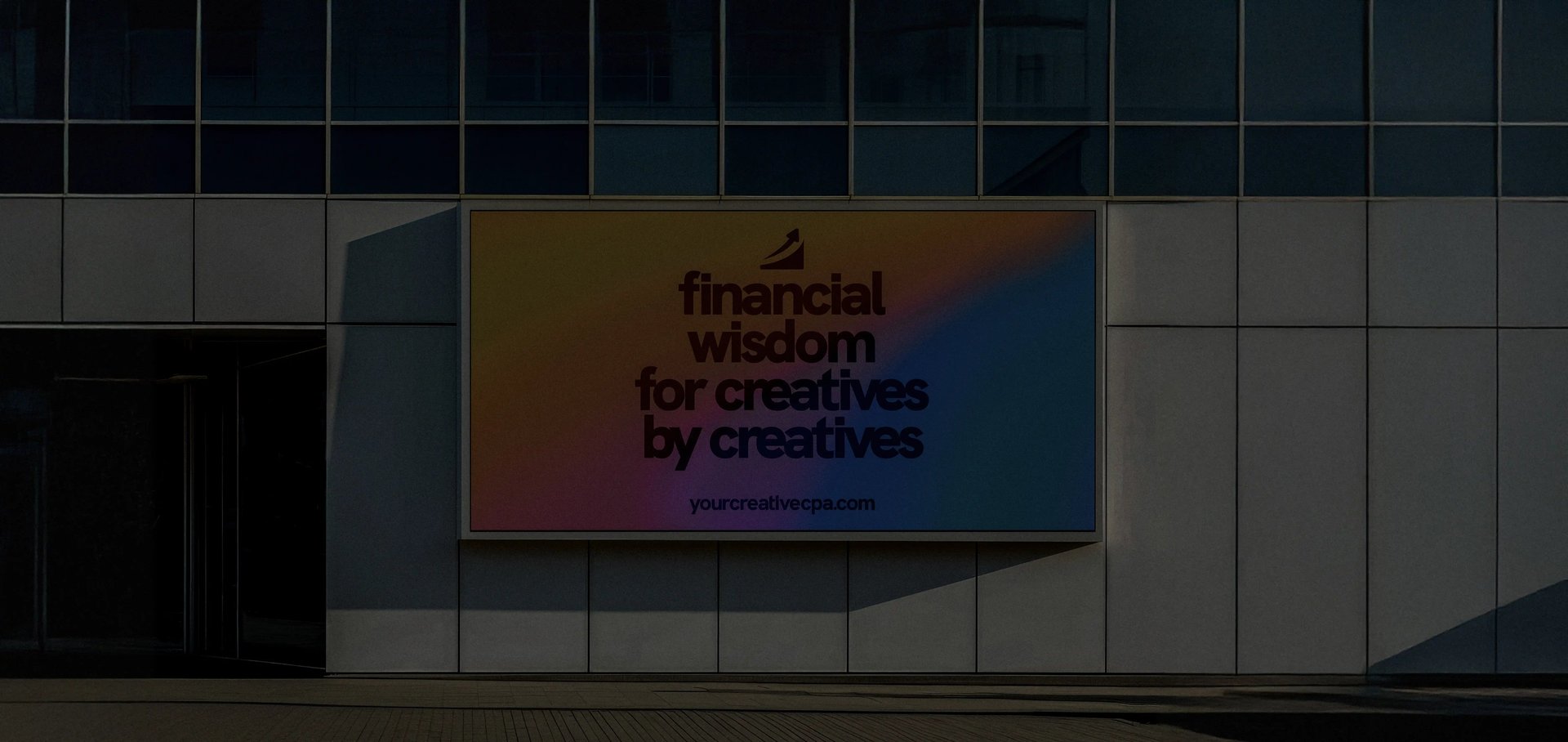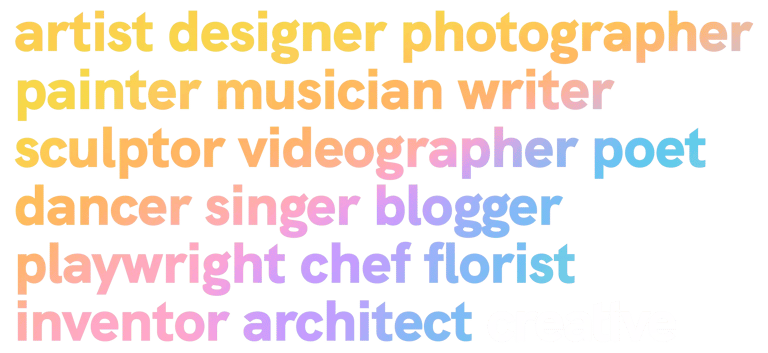
Easily Understand Your Finances With The Financial Health Check Template Today
How to Start a Side Hustle While Working Full-Time
Learn how to start a side hustle while working in your career, plus the best side hustles of 2025. This guide is perfect for full- or part-timers looking for a side gig.
BUSINESSHOMEPAGE - FEATURES - ROW 2
David Kindness, CPA
5/13/2025



How to Start a Side Hustle While Working Full-Time
Published on May 12, 2025
Written by David Kindness, CPA
Why you can trust Your Creative CPA
Our content is written and edited by industry experts who are creative entrepreneurs just like you. Learn more. We're human-first.
So many creatives have experienced this situation before: you're working a full-time job and earning an income that pays the bills. It feels rewarding from time to time, but it doesn't always feel fulfilling. You want something that earns income and fulfills your passion: photography, painting, music, pottery, interior design, web design, or another creative outlet.
You decide to start a side hustle in your free time. You create an Instagram account, design a landing page, and start offering your products and services to clients. It's hard work, but it's fulfilling: not only does it validate your art, proving that people are willing to pay for it, but it also earns some extra income on the side.
This transition is challenging but beautiful. I went through it myself when I started my photography business, and again when I started Your Creative CPA. In this guide, I’ll cover everything you need to know about starting a side hustle while working, including how to track income and expenses, valuable tax tips, and some great side hustle ideas for 2025. Read on to learn more.
Fast Facts About Side Hustles
70% of side hustlers earn an extra $500+ per month (Forbes, 2024).
1 in 3 Americans has a side hustle (Bankrate, 2025).
Creative side hustles (like freelancing and digital content) are among the fastest-growing gigs.
Flexibility is key—most side hustlers spend 5-15 hours per week on their gig.
What is a Side Hustle?
A side hustle is any income-generating activity outside of your primary job. Unlike passive income streams (like investments), side hustles require active effort. Side hustles can include nearly anything, from freelance photography or videography work, to web design consulting, to selling handmade art, painting murals on the weekends, or even hosting pottery classes for your local community.
Creative side hustles aren't just for youngsters, either - you can pursue a creative passion at any age. The best side hustles align with your passions, skills, schedule, and financial goals. In general, the goal of a side hustle is to act as a creative outlet, create extra income, and potentially even become the first step in building a business you're passionate about.
The Best Side Hustles of 2025 (for Creatives)
If you’re looking for side gig ideas that leverage creativity, consider these good side hustles to make some extra money in 2025:
Freelance Writing, Editing, or Copywriting: If you have a knack for writing, this could be for you. Businesses always need content, and platforms like Upwork and Fiverr make it easy to find clients to create for. Choose a topic you enjoy and have expertise or experience in.
Graphic Design & Branding: If you enjoy design, then offering services logo design, social media graphics, or branding packages can be a great way to earn money in addition to your job.
Selling Digital Products: Creating printables, templates, or stock photos on Etsy or Gumroad can be an awesome way to make recurring revenue from single products. The competition in this space can be tough, though, so make sure you think of new ways to market and sell your creations.
Podcasting or YouTube Content Creation: Consider monetizing your content through ads, sponsorships, and affiliate marketing. This can also work for content shared on Instagram, TikTok, Threads, or X. You could even live stream on Twitch, Kick, or YouTube Live!
Handmade Crafts & Art Sales: Sell on Etsy, at local markets, or through Instagram. People LOVE handmade items, so this is a great way to turn a hobby into extra income.
Host Creative Workshops: Use your creative talents and experience to teach others about your passion. You could host photography workshops, painting or pottery classes, graphic and web design seminars, and more. You get to share your passion with others and make new friends, and they get to pick up a new hobby and creative outlet.
These side hustles allow you to monetize your talents while keeping a flexible schedule.

The best side hustles align with your passions, expertise, and experience. It should feel fulfilling, like something you'd do even if you never got paid for it.

Alright, now that we've waxed lyrical about the beauty of pursuing your passions, let's dive into some important financial and logistical topics. An important part of starting a side hustle is tracking income & expenses and managing taxes so you stay on track and stay out of trouble. We explain below.
How to Record Side Hustle Income
It is genuinely incredibly important to start tracking your income from your side hustle right when you get started. This is crucial for budgeting, taxes, and achieving financial success with your venture. You can use a plethora of different tools and software to achieve this, many of which are free. Here's how:
Use Spreadsheets or Accounting Software: Spreadsheets, like Google Sheets, Microsoft Excel, or Apache OpenOffice, offer a capable and free way to track your income. Accounting software, like QuickBooks, FreshBooks, or Wave offer automation and built-in tools to make tracking income as easy as possible.
Separate Business & Personal Accounts: While not technically necessary, opening a dedicated bank account for your side hustle can help some creatives keep better track of their business income and expenses. A business credit card is another option to automatically separate expenses.
Keep Invoices and Receipts: Tools like PayPal and HoneyBook help automate this.
Track Cash Payments: Use a spreadsheet or accounting software to keep track of payments you receive in cash or by check.
How to Track Deductible Side Hustle Expenses
Of equal importance to tracking income is tracking expenses, and particularly deductible expenses. Maximizing your deductible expenses allows you to reduce your tax burden and increase your profits. Here are important deductions you should be aware of:
Home Office Costs: The IRS allows you to deduct home expenses for the percentage of your home that you use exclusively for business.
Supplies and Equipment: Items used to conduct your business, like laptops, software, materials, or office supplies, are generally all deductible. You can even deduct something as small as a pencil or tape.
Marketing and Advertising: The amount you spend on website builders, web hosting, domain names, social media ads, search ads, etc, could be a deductible expense.
Vehicle Expenses: You can generally deduct auto expenses for the amount used for your business (either mileage or actual expenses).
Travel Expenses: Flights, taxis, ride sharing, hotels, short-term rental homes, etc are generally deductible if related to your business.
Professional Development: If you're a lifelong learner, you'll be happy to know that courses that help you improve the products or services you offer can be a deductible business expense.
As always, it's important to consult a tax professional to ensure compliance. We're building out a CPA Partners Program where you can find a great CPA or EA to help.
How to Pay Taxes on Side Hustle Income
Unlike traditional jobs, taxes aren’t automatically withheld from side hustle earnings. Here’s what you need to do:
Estimate quarterly taxes: The IRS requires you to make estimated tax payments if you expect to owe $1,000+ in taxes for the year.
Save 25-30% of earnings: Set aside funds to avoid surprises at tax time.
Report income accurately: Use Schedule C on Form 1040 to report the income you receive from clients (including Form 1099-NEC you receive).
Claim deductions: Lower taxable income with eligible business expenses.
Take a look at our Estimated Tax Guide to make sure your estimated taxes are taken care of.
How to Start a Side Hustle While Staying Creative
Juggling a full-time job and a side gig is time-consuming and requires discipline. Here are strategies to stay productive and inspired:
Set a schedule: Block time for your side hustle. Fit it for your schedule: early mornings, lunch breaks, weekends - whatever works for you.
Automate tasks: Use tools like Canva, Zapier, or AI chats to automate and streamline work.
Systemize Everything: Figure out what tasks you want to perform and how you want to perform them, then systemize it so you don't have to think about or re-learn it each time.
Stay motivated: Keep your bigger goal in mind and remember why you started. Consider joining online communities (Facebook groups, Reddit forums) for support.
Avoid burnout: Prioritize rest and set boundaries to maintain creativity. Burnout is real, so work at a pace that works for you.
Frequently Asked Questions (FAQs)
How many hours a week should I spend on a side hustle?
Most successful side hustlers dedicate 5-15 hours per week. Start small and scale as you gain momentum and financial success.
Do I need to register my side hustle as a business?
It depends on earnings and structure. Sole proprietors can operate under their own name, but an LLC provides liability protection.
What’s the easiest side hustle to start with no money?
Freelancing (writing, design, virtual assistance) or selling digital products requires minimal upfront costs. You can also convert a hobby, like painting or pottery, into a business by selling your art on Etsy or a website.
How do I find clients for my side hustle?
Use platforms like Upwork, Fiverr, and LinkedIn. Networking and social media marketing on Instagram, TikTok, Twitter, Threads, etc. also attract clients.
Can a side hustle replace my full-time job?
Yes! Many entrepreneurs transition from side hustles to full-time businesses. It's important to ensure steady income and the potential for growth before making the leap.
Disclaimer: the information provided in this article is for educational purposes only and does not constitute tax, accounting, investing, legal, or financial advice. The information in this article does not take into account your unique financial or business situation or goals, and YCCPA cannot be responsible for reader's financial decision-making. YCCPA's goal is to educate and support you on your creative business journey.
Written by David Kindness, CPA
David is a CPA (Certified Public Accountant) and professional photographer, videographer, and designer based in San Diego, California. Learn more.
Supported by Ads
Your Creative CPA is supported by the ads you may see in our articles and guides. These ads help us serve creatives like you.







Created by David Kindness
© 2025 Your Creative CPA | Terms
type1wild.com partner
Exclusive guides and tools for creatives, right to your inbox.













